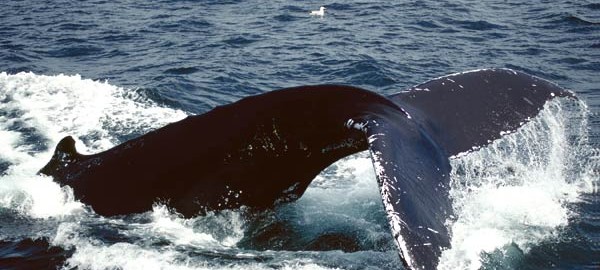In our dear archipelago, belonging to La Macaronesia, we’re lucky to enjoy ideal oceanographic and geomorphological conditions for the coexistence of tropical sea species coming from the North and the ones coming from the warm or cold South.
These characteristics turn us into one of the places in the world with the widest cetacean variety in its waters, no doubt ranking at the top in Europe. According to the scientists and scholars Vidal Martín and Manuel Carrillo (Red Canaria de Varamientos y Sociedad para el Estudio de los Cetáceos en Canarias), in the Canary Island waters 30 cetacean species have been identified, including whales and dolphins.
The first whale watching we have records of date back to the first century B.C; the data were recorded in a text by Plinio about the large number of whales coming to our coasts. Aboriginal remains of vertebrae and ribs belonging to big cetaceans, as well as decorative elements and carved whale bones reveal that these huge water mammals have been living in our waters for centuries.
According to Vidal Martín, the main species we have records of are: beaked whales, sperm whales and the long-finned pilot whales (great depths divers that can dive to depths below 3000 m. in order to feed themselves with great depths cephalopods and crustaceans). There are also several species of dolphins and whales (fin, sei and Bryde’s whales), some of which feed on schools of fish and breed and live in our waters, in some cases even for several years.
The tourist sector is beginning to take up whale watching near our coasts, and according to some experts this is an activity that, well organized, shouldn’t mean a threat for the cetaceans. In the South of Tenerife, La Gomera and Gran Canaria boat trips for whale watching are easier, as cetaceans are usually found in quiet waters, very near the coast. In Fuerteventura and Lanzarote it’s a bit more complicated due to a greater instability of their waters, although this activity is mounting and so is our tourist offer as far as water experiences is concerned.
In our island of Fuerteventura you can find “La senda de los Cetáceos” (the cetaceans’ pathway), a scientific, artistic and social initiative that consists of displaying the remains of the skeletons of several cetaceans on our beaches in public areas, using them as source of information and environmental awareness. This initiative offers artists the chance to intermingle landscape, art and nature, and it offers scientists the chance to study the skeleton of these huge sea animals once other aspects have been studied such as the possible causes of beaching and the death of the cetaceans that every year reach our coasts. We can find some of these sculptures in places such as Las Salinas del Carmen (Puerto del Rosario), where the huge skeleton of a 19,5 metre-long female fin whale (Balaenoptera physalus)was found stranded on the 18th April 2000 in the coast of Majanicho (La Oliva).
In El Saladar de Jandia, Morro de Jable (Pájara)the skeleton of a 14,5 meter-long male sperm whale (Phuseter macrocephalus) has been displayed since 2006; it was found stranded in El Granillo (Pájara) in 2004. Other sculptures in this pathway are Cuvier’s beaked whale (Ziphius cavirostris), the short-finned pilot whale (Globicepahla macrorhynchus), considered as a vulnerable species in the National catalogue of endangered species, and a sperm whale (Physeter macrocephalus).
The osteological study of these animals tries to reveal if there are macaronesian populations or even exclusive in the Canary Islands, as osteological variations in species that have adapted to a determined area have been produced.
In the trips we carry out with FuerteCharter, in many occasions, we are really lucky to have the chance to watch these impressive mammals that come to meet us, mainly in the Island of Lobos area. Sometimes they approach us as if they wanted to say hello, and those moments are a really incredible experience not just for our customers but for ourselves, the crew, too.
In next articles we’ll provide a classification of the different cetaceans living in majorera waters, to explain the peculiarities of these big mammals.
Notes about Cetaceans:
– Huge mammals who live exclusively in the water and don’t need the solid ground in order to give birth.
– They are divided into two sub-orders: Mysticeti (bearded cetaceans which feed themselves filtering the water-food through their beard) and Odontoceti (homodont hunters, whose teeth are all the same type)
-Longevity: it varies depending on the species; ranging between 30 years in some dolphins and 60 years in the case of pilot whales.
– They feel threatened by the use of high-frequency sonar in naval exercises, by high-speed vessel crashing ferries or freighters and by oil platforms, noise pollution and habitat degradation.
FuerteCharter’s Team
